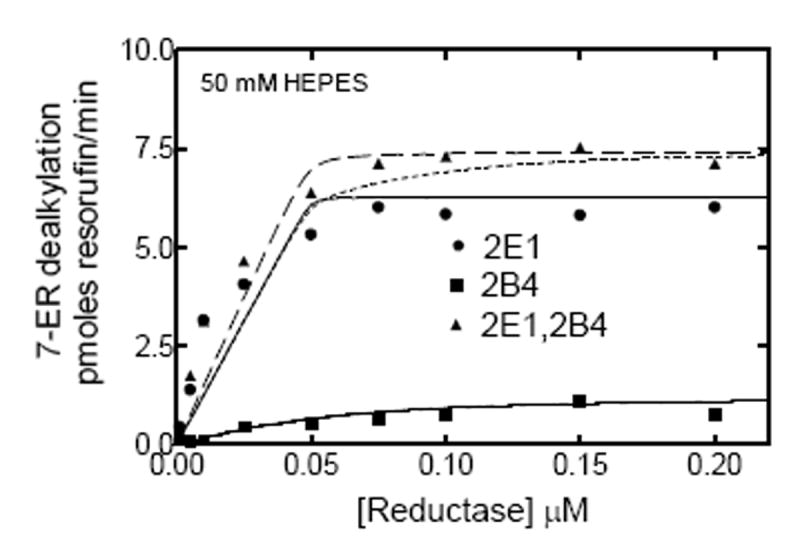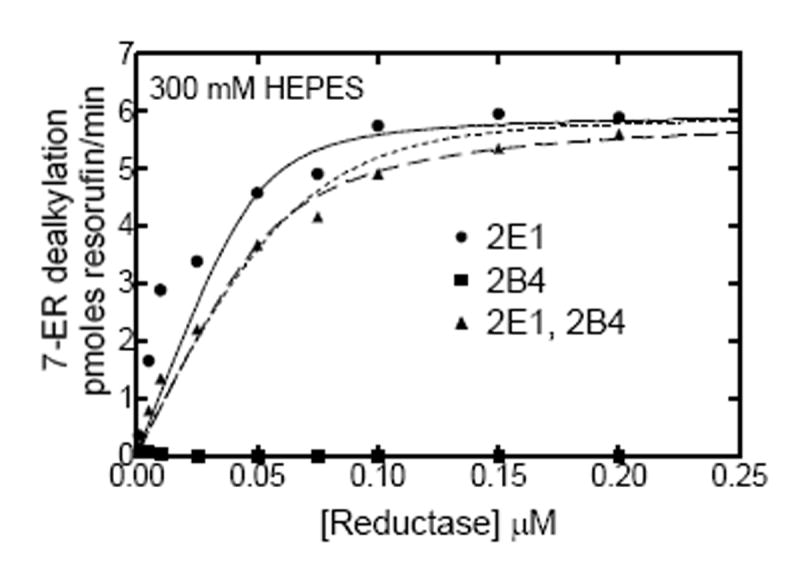Figure 5. Effect of ionic strength on CYP2E1- and CYP2B4-mediated EROD as a function of reductase concentration.


EROD was determined as a function of reductase concentration in both simple and mixed reconstituted systems. The binary reconstituted systems contained 0.05 μM CYP2B4, or 0.05 μM CYP2E1, whereas the mixed reconstituted system contained 0.05 μM of both CYP2B4 and CYP2E1. The DLPC concentration was 8 μM and the reductase was varied from 0-0.2 μM. The experimental data represent (■) reductase and CYP2B4, (●) reductase and CYP2E1, and (▲) reductase, CYP2B4 and CYP2E1. The curves for the binary systems were fit to the experimental data using a model where CYP2B4 and CYP2E1 compete for the available reductase (solid lines). The experimental data for the mixed reconstituted systems were fit to (1) a mathematical model only allowing the formation of reductase-CYP2E1 and reductase-CYP2B4 complexes (- - - - -), and (2) a model that permits the formation of CYP2E1-CYP2B4 complexes ((— — —). (A) Effect of mixed reconstitution of CYP2B4 and CYP2E1 on the reductase dependence of EROD at 50 mM HEPES. (B) Effect of mixed reconstitution of CYP2B4 and CYP2E1 on the reductase dependence of PROD (300 mM HEPES). The experimental data for this enzyme pair could be effectively fit using a simple model allowing the formation of binary complexes at both low and high ionic strength.
